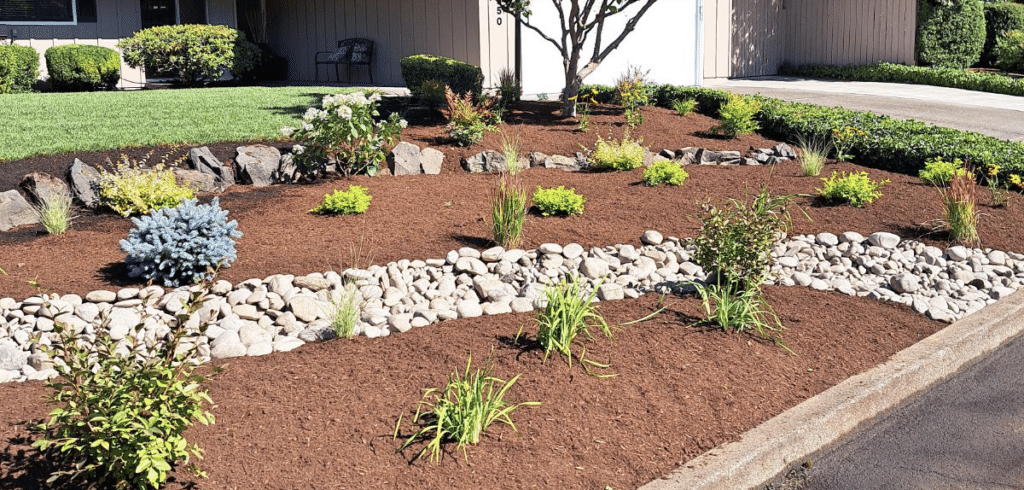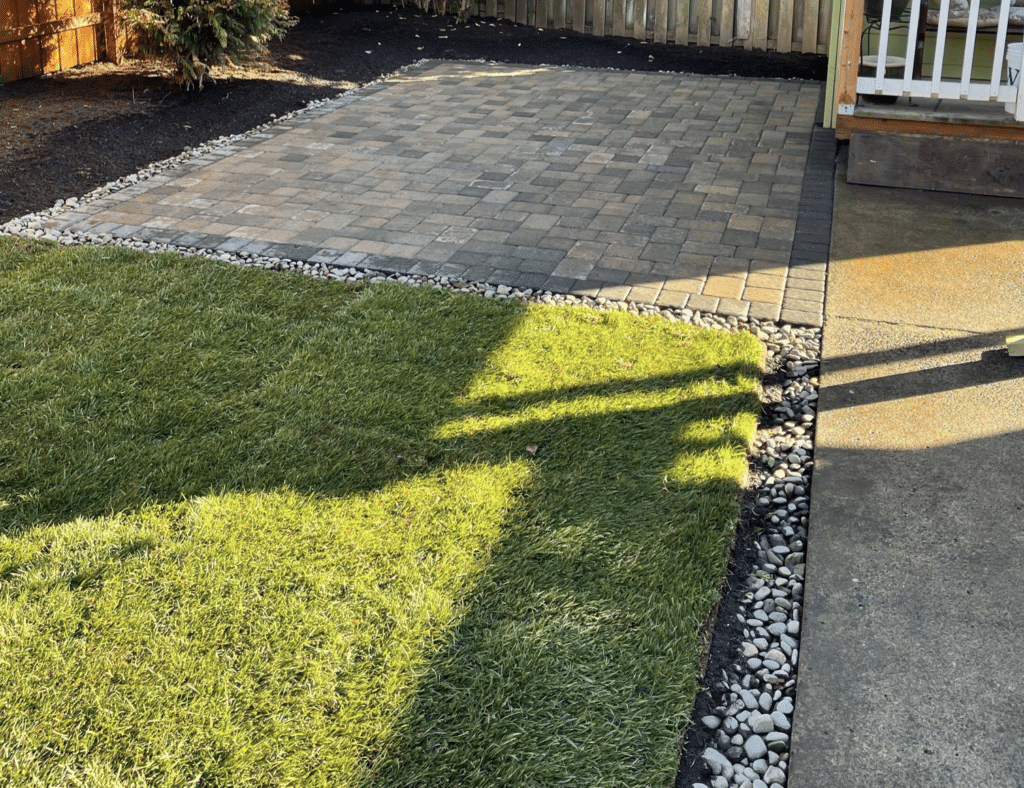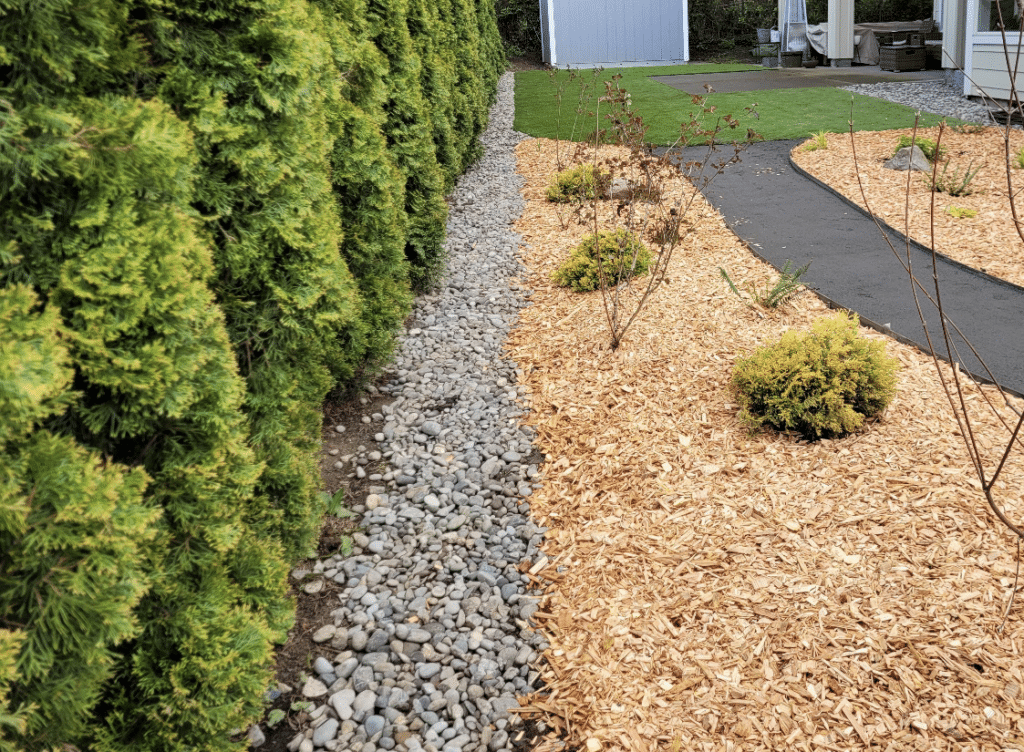The winter wet has arrived with a vengeance in the Portland metro area this year. Tualatin saw 3 inches of precipitation in the first 5 days of the month. While our plants and landscapes enjoy moisture, the clay soil found in the region doesn’t absorb the water when we get that much over such a short period of time and instead you can see rivulets of runoff. Do you know where that excess water is going?

Instead of gambling that the water isn’t going somewhere you don’t want it, adjust your landscape to help direct the flow of water. With a variety of drainage solutions available, you can reduce the risk of water in unwanted locations. One of the common drainage solutions is a French drain with a dry well. A French drain utilizes drainage pipe in the ground with aesthetically pleasing river rock on top for a riverbed look. Water naturally follows the flow of the land so French drains can collect the water and then, using the drainage pipe, direct the water to a dry well.

In addition, French drains can be positioned around concrete and paver patios. The water running off the patio will collect in the French drain and rock which will keep the edge from getting soggy and muddy. These couple inches of rock can certainly help ease the drainage headache that might occur otherwise.

Dry wells are basins in the ground that will collect the water and then allow the water to percolate into the surrounding soil at a natural rate. By have the basin buried 3’ down the water will disperse into the subsoil instead of remaining in puddles on top of the ground, only permeating a few inches of mud.
Water is an important resource and being able to keep it in the landscape instead of down the gutters and storms drains, will benefit the ecosystem.





